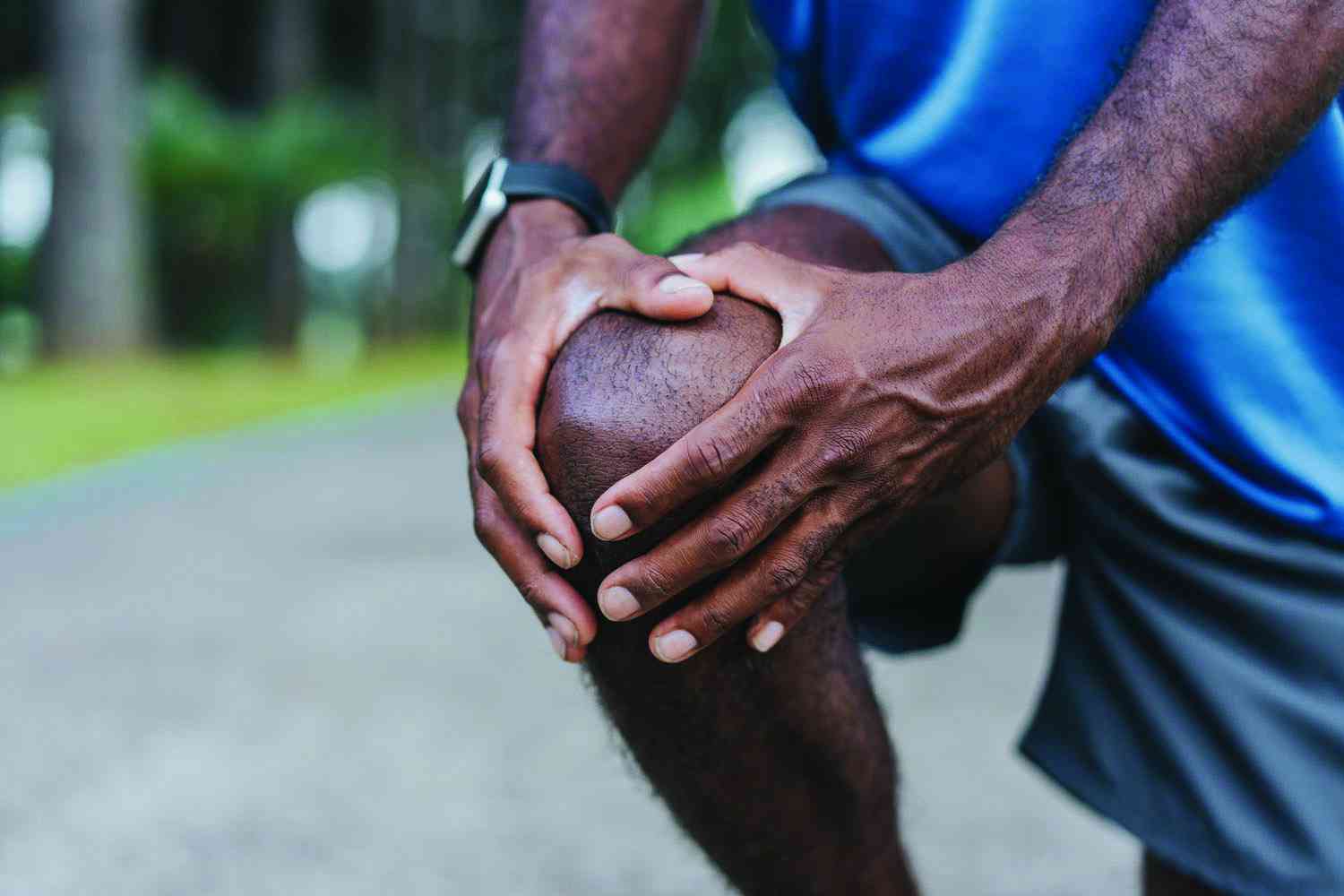
Knee pain is common in adults but can be a nuisance and sometimes debilitating. It is particularly common among those who play sports that involve jumping or pivoting quickly but is often due to wear and tear from ordinary activities.
Our knees undergo considerable stress from everyday activities such as walking, bending, standing, lifting and kneeling and from high impact activities such as jogging, aerobics and some sports.
The knee is a joint where the tibia, which is the shin bone (larger bone of the lower leg) and the femur (thighbone) meet and are held together by muscles, ligaments and tendons.
The joint is covered by the knee cap (patella). The bones are protected and cushioned by cartilage.
The quadriceps muscles, which are on the front of the thigh, straighten the leg, while the hamstring muscles at the back of the thigh, bend the leg at the knee.
Tendons, which are tough cords of tissue, connect the muscles to the bones.
Ligaments are flexible bands of tissues that connect bone to bone.
Some of them provide stability and protect the joints, while others limit the forward and backward movement of the shin bone.
- Knee pain due to injury or arthritis
Keep Reading
Knee problems include sprained or strained ligaments, cartilage tears, arthritis and tendonitis.
Causes
Knee pain can be caused by injuries, arthritis or various other problems such as infection and mechanical issues.
A knee injury can affect ligaments, tendons, fluid filled sacs known as bursae that surround the knee joint as well as bones and cartilage.
Common knee injuries include a torn meniscus, a tear in the anterior cruciate ligament, fractures, knee bursitis and patellar tendinitis.
The meniscus is a soft fibrous cartilage that acts as a shock absorber between the shinbone and thighbone.
It can be torn if you suddenly twist your knee while bearing weight on it.
A tear in the anterior cruciate ligament, which is one of four ligaments that connect the shinbone to the thighbone, is common in people who play basketball, soccer or other sports that require sudden changes in direction.
Fractures can occur in the bones of the knee, including the kneecap, during falls or in road accidents.
Those whose bones have been weakened by osteoporosis can sometimes sustain a knee fracture just by taking a wrong step.
Knee bursitis occurs when a knee injury causes inflammation in the sacs of fluid that cushion the outside of the knee joint.
Patellar tendinitis is an inflammation that can be caused by an injury to the patellar tendon that runs from the kneecap to the shinbone.
This tendon allows you to run, jump and kick.
Knee pain can also occur when a piece of bone or cartilage breaks off due to an injury or degeneration and interferes with the movement of the knee joint.
Other causes of knee pain include a dislocated kneecap.
Arthritis is a common cause of knee pain in older adults.
Osteoarthritis is the commonest form, occurring when the cartilage in the knee deteriorates with use and age.
Pain may also arise between the kneecap and underlying thighbone.
This is common in athletes, young adults and older adults. In older adults this is generally the result of arthritis in the kneecap.
Risk factors
Excess weight increases the stress on your knee joints. It also increases the risk of osteoarthritis by accelerating the breakdown of joint cartilage.
A lack of muscle strength and flexibility increases the risk of knee injuries.
Sports that put great stress on your knees increase the risk of knee problems.
Basketball jumps and pivots and the pounding that your knees repeatedly take when running or jogging increase the risk of a knee injury.
Jobs that require repetitive stress on the knees such as construction or farming may also increase the risk of knee injury.
If you have previously suffered a knee injury it is likely you may injure your knee again.
Symptoms
Symptoms that may accompany knee pain include swelling and stiffness, redness and warmth when you touch the knee, weakness or instability in the knee, popping or crunching noises and an inability to fully straighten the knee.
Treatment
Not all knee pain is serious. However, some knee injuries and conditions such as osteoarthritis can lead to increasing pain, joint damage and disability unless treated.
Home treatment that may help involves resting from normal activities to reduce repetitive strain on your knee, while taking an over-the-counter pain killer, if necessary.
Placing an ice pack wrapped in a thin towel over the knee and rubbing the knee with it helps reduce pain and inflammation.
Putting a hot water bottle on the knee may bring temporary pain relief.
Wearing a compression bandage or knee guard that is lightweight and tight enough to support your knee without interfering with blood circulation helps prevent fluid build-up in damaged tissues and maintains knee alignment and stability.
If these measures do not bring relief, you may need to see a doctor.
You should see your doctor if you cannot bear weight on your knee or feel the knee is unstable or gives out or if there is a marked knee swelling, inability to fully extend or flex your knee, an obvious deformity in your leg or knee, fever in addition to the redness, pain and knee swelling or if you have severe knee pain associated with an injury.
Treatment depends on the cause of your knee pain. The doctor is likely to inspect your knee and check how far your can move your lower leg.
He may seek further information through imaging tests such as an X-ray, scan or MRI to help or confirm his diagnosis of the likely damage done to the knee.
The doctor may prescribe pain killing or anti-inflammatory medication coupled with physiotherapy.
This is often sufficient. In some instances injections of medicine are given into the knee.
Sometimes surgery is recommended.
This may be carried out through keyhole surgery, where a fibre-optic camera and long narrow surgical tools are inserted through a few small incisions around your knee to remove loose bodies from the knee or remove or repair damaged cartilage.
Other possible surgical options, depending on the damage to the knee, are partial knee replacement, total knee replacement and osteotomy, a procedure where bone is removed from the thighbone or shinbone to better align the knee and relieve arthritis pain.
- The information in this article is provided as a public service by the Cimas iGo Wellness programme, which is designed to promote good health. It is provided for general information only and should not be construed as medical advice. Readers should consult their doctor or clinic on any matter related to their health or the treatment of any health problem. — igo@cimas.co.zw or WhatsApp 0772 161 829 or phone 024-2773 0663






